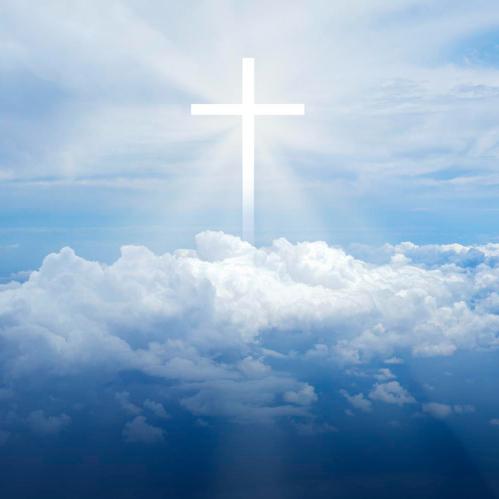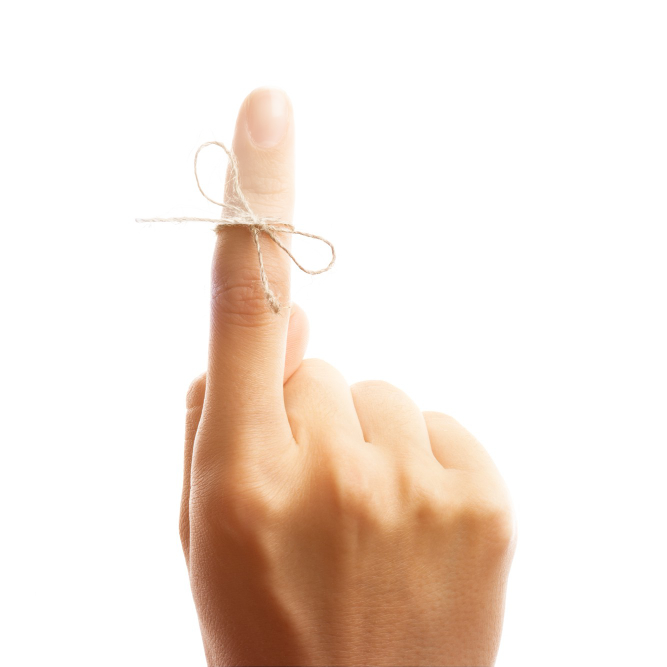The cross is one of the most powerful and enduring symbols in human history. Often associated with Christianity, the cross holds deep spiritual meanings that transcend religious boundaries. Whether you are a believer or simply curious about the symbolism behind the cross, this article will explore nine spiritual meanings that you should know. From representing sacrifice and redemption to symbolizing unity and transformation, the cross holds a profound significance that can inspire and uplift us in various aspects of life. Join us on this enlightening journey to discover the spiritual depths of the cross.
1. The Symbol of Sacrifice and Redemption
This may be the most well-known meaning of a cross. After all, it’s the Christian symbol for Jesus Christ’s death.
He was nailed to a cross and by dying on that cross, He took away our sins and saved us from the spiritual death we deserved.
While that is what the cross symbolizes in a religious context, you can also apply it in your everyday life. For example, you might see a cross when you’re going through a tough time.
It helps to remember that Jesus went through many trials of His own. And through His actions, He shows us that not only does God forgive us; He also gives many second chances. The Lord gives us those second chances because He loves us and forgives us.
Once you’ve acknowledged your mistakes and asked for forgiveness, work on improving yourself. The Bible says God does not like empty talk. Show Him how serious you are about becoming a better person.
The cross also serves as a good reminder of Jesus’ love for all of us. Despite being beaten, mocked and crucified, Jesus still loved and forgave those who hurt Him. He didn’t even seek revenge on those who did him wrong.
And in return, we should offer mercy and compassion to others who need it.
For some people, seeing a cross may remind them of Jesus’ suffering. This is a good time to think about the sacrifices that others have made for you. Also take this opportunity to reflect on your own suffering.
The cross is a reminder that Jesus and God don’t want you to suffer. Whenever you feel hurt or distressed, talk to them and tell them what’s wrong. Ask them to help you get through your pain because they love you.
2. The Ultimate Act of Love and Selflessness
What do you think of when you see a cross?
Many people think of Jesus and his death on the cross. But it might seem confusing for others to embrace such a dark and tormenting image.
There are over 2.5 billion people who believe in Jesus as their savior. It’s the second most followed religion in the world.
The cross is the ultimate symbol of love and selflessness.
Christians believe that Jesus sacrificed himself to save mankind from its sins. He died a gruesome death, taking the pain and suffering on His shoulders so that we could have eternal life with God.
The Bible describes Jesus’ crucifixion like this:
“The soldiers led Jesus away into the palace (that is, the Praetorium) and called together the whole company of soldiers. They put a purple robe on him, then twisted together a crown of thorns and set it on him. And they began to call out to him, “Hail, king of the Jews!” Again and again they struck him on the head with a staff and spit on him. Falling on their knees, they paid homage to him. And when they had mocked him, they took off the purple robe and put his own clothes on him. Then they led him out to crucify him.”
“A certain man from Cyrene, Simon, the father of Alexander and Rufus, was passing by on his way in from the country, and they forced him to carry the cross. They brought Jesus to the place called Golgotha (which means “the place of the skull”). Then they offered him wine mixed with myrrh, but he did not take it. And they crucified him. Dividing up his clothes, they cast lots to see what each would get.”
“It was nine in the morning when they crucified him. The written notice of the charge against him read: THE KING OF THE JEWS.”
“At noon, darkness came over the whole land until three in the afternoon.”
And at three in the afternoon Jesus cried out in a loud voice, “Eloi, Eloi, lema sabachthani?” (which means “My God, my God, why have you forsaken me?”).
When some of those standing near heard this, they said, “Listen, he’s calling Elijah.”
Someone ran, filled a sponge with wine vinegar, put it on a staff, and offered it to Jesus to drink. “Now leave Him alone! Let’s see if Elijah comes to take him down,” he said.
With a loud cry, Jesus breathed his last.
The Roman soldiers mocked Jesus with a crown of thorns as he hung on a cross for hours until He met his final breath.
It was an absolutely brutal way for someone to die. And yet Christians wear crosses around their necks or display them in their homes as a hopeful sign of love.
Crosses are a visual reminder that God loves us so much that he gave His one and only Son for us.
If you’re seeking solace or love from someone else or feel like you don’t deserve love or grace from others — let alone from God — crosses serve as reminders of hope.
3. A Sign of Forgiveness and Mercy
There was a time when the cross was the symbol of punishment for criminals. Being crucified was the most torturous way to die and a terrible way to be remembered by. However, Christianity changed the perspective of a cross. The very same symbol became representative of forgiveness, love, and mercy.
The cross is such a powerful imagery of the Christian faith because it speaks to the forgiveness and mercy that God gives His people. We were the criminals, but Jesus took our place. He sacrificed Himself and died so that we could have eternal life despite our sinfulness.
The cross represents the greatest act of love any human being has ever received. God sent His only Son to die for us so that we could have an opportunity to rekindle our relationship with Him. When you look at the cross, you can find solace in knowing that you are loved, cherished, and forgiven.
As stated in John 3:16-17:
“For God so loved the world that he gave his one and only Son, that whoever believes in him shall not perish but have eternal life. For God did not send his Son into the world to condemn the world, but to save the world through him.”
We are all sinners who are far from being perfect. We do not deserve anything from God and yet He takes it upon Himself to show each of us kindness, grace, and compassion through recognition of our imperfections.
If you are feeling burdened by your past transgressions or feel detached from God’s love due to your mistakes, take a moment to meditate on the cross. The Lord gave His only Son to be given us everlasting life and with it comes His boundless forgiveness and mercy.
4. The Power of Faith and Hope
Aside from the benefits, the power of faith is one of the lesser-known spiritual meanings of the cross.
For Christians, having faith is a sign of belief in a greater power. By having faith in Jesus, you are visually manifesting this faith. It’s a reminder for Christians to place their trust and belief in God.
When you couple that with the crucifixion of Jesus, you’re also reinforcing hope. Jesus’ crucifixion and resurrection is proof of hope and faith that there are better times ahead. The cross serves as a reminder that even in times of adversity, we should never lose faith and hope.
Placing a cross at home or on your body is a powerful visual representation of your faith and hope. Every time you see it, you are reminded that in any situation you face, having faith will lead to a hopeful outcome.
Overall, the cross symbolizes the importance of having faith and hope. It’s an encouragement for everyone to keep believing in the good even when you face challenges or adversities in life.
How to use this power
Similar to maintaining mental health, keeping your faith strong is challenging. But there are some ways to maintain it so that when you need to tap into it, you can learn how to get through anxiety and fear. Here are some tips:
- Pray
To maintain your faith and connection with God, pray regularly. It allows you to keep talking with God, which means you’re continuously reaffirming your trust in Him.
- Church attendance
If you can, attend church ceremonies and activities regularly. Church is a great place to get support from fellow believers while serving as constant reminders of your beliefs.
- Bible study
Pick up your Bible and study passages whenever you can. Reading through the Bible allows you to see God’s wisdom and promises, which help maintain your faith and hope.
- Daily reflection
Every day, take some time to reflect on your life and everything around it. Try doing it during quiet moments like when taking a walk or driving alone.
- Nurture your spiritual growth
Finally, always look for ways to grow your spirituality. Start small by adding some spiritual practices into your daily routine.
5. The Path of Unity and Oneness
The concept of unity, oneness and integration, is an important message behind the spiritual meaning of the cross.
In this context, each arm of the cross represents a different aspect of life. The horizontal line represents everything that exists in our world that we can touch, see, hear and feel. This includes all of creation and physical reality.
Meanwhile, the vertical line represents the connection between everything on the spiritual plane with the physical world. This implies that there is a higher power and intelligence that connects with all life on Earth, both human and non-human animals.
Without an understanding of the connection between the two lines, it’s impossible to find balance in one’s life. The vertical line is also a representation of the divine source that we need to strive to connect with more than anything else.
The meeting point between these two lines at a 90-degree angle means that they create a sense of balance in one’s life. Spirituality is just as important as personal growth and worldly pursuits.
It’s important to maintain equal focus on both aspects of our lives. This helps us live a balanced life and achieve sustainable progress and growth.
The path to integrating both aspects in our day-to-day is one that requires plenty of self-knowledge and deep introspection. It means finding ways to blend our worldly activities with a spiritual practice.
This can be done through cultivating mindfulness in our activities, which involves being fully aware and present in every single moment. By being able to do this, we can access more meaning for all things that we do, which creates a deeper sense of connection to us.
Another way is by seeking out a spiritual practice that you resonate with. There are many different paths to spirituality like religion, meditation, yoga or even energy healing modalities. Better yet is combining multiple practices into your day-to-day routine.
6. Transformation and Renewal of the Soul
A cross is also connected to the spiritual development and the evolution of your soul. Just like a caterpillar goes through metamorphosis to become a butterfly, our souls too need to be transformed to achieve a higher consciousness.
To experience a spiritual awakening, you need to transform. You need to let go of all your past fears and mistakes and cleanse your soul of any negativity. And if you are able to experience this transformation, you will notice that you will have a greater connection with the divine.
Think of it this way; when you are constantly living in sin, you are distancing yourself from the divine. You are not only creating distance between yourself and Him but also creating a barrier in the transformation of your soul. And despite wanting to be close to Him and seek salvation, keeping yourself invested in your old ways will never allow you to form this emotional and spiritual connection. And if you want your soul to be transformed, you need to move away from your old self and embrace changes.
And this change is represented through the symbol of the Cross. Just like Jesus sacrificed himself on the Cross to cleanse our souls from sin, we must also make sacrifices in our lives to eliminate sin and bring about our spiritual transformation.
When Jesus was dying on the cross, he went through immense pain. But even in those times of great suffering, he remained faithful and continued His mission without any hesitations or complaints. Similarly, if we want our souls to be transformed and cleansed, we need to make tough decisions and sacrifices without giving up or losing faith. And once we are able to accomplish this goal of spiritual transformation, we will be reborn as children of God and have a direct relationship with Him.
7. Overcoming Suffering and Finding Strength
Jesus was persecuted for speaking the word of God and even faced death on the cross. Like His journey, followers of Christ are expected to suffer both internally and externally. The cross acts as a reminder that suffering comes in different forms and is something everyone will encounter, no matter how faithful.
But through suffering, you gain strength. Jesus’ death on the cross is a testament to what we can gain by meeting our problems with faith. When you reflect on the physical pain Jesus must have felt before his death, your own suffering seems bearable. Through Him, you can endure the worst of adversities and still find strength.
If you look back at a time when everything seemed to be falling apart, you can likely remember a moment when your faith in God carried you through at your hardest. The cross serves as a reminder of this strength during difficult times and tells us we will persevere even when it feels impossible.
The Easter season falls in spring and is a time of renewal. It’s no coincidence that Jesus’ resurrection aligns with this time of year. As He rose from the dead, so can you be reborn if you stay rooted in your faith.
The beauty of Christianity is that it teaches that God never gives us more than we can handle. You won’t face obstacles alone; He will guide you through difficult times and help you learn valuable lessons about faith and trust.
How You Can Overcome: To rely on God during times of suffering, read the Bible or seek out Bible verses for comfort. Recite affirmations or Christian affirmations to build up your faith and receive positive energy.
8. Embracing Life’s Crosses and Challenges
The Cross reminds you to be resilient and steadfast when faced with life’s trials. View problems and challenges as tests that prove your strength of will.
When you openly embrace a problem, you tackle it head-on and come out stronger. The test may not be easy and its trials may seem overwhelming but it allows you to learn more about yourself and your ability to overcome.
A problem may even be some form of spiritual blockade that needs addressing before you can truly move forward. Doing so clears your path of obstructions, allowing you to continue your growth.
When you’re facing a difficult decision, the Cross guides you as to which one you should take. Regardless how hard or painful the choice may be, Christ teaches that taking up your cross is a necessary aspect of growing closer to God.
One can look at infertility as a perfect example of taking up your cross. The experience can be mean and cruel for couples who have always wanted to start a family. It makes them reflect on their path, test their resolve and shape them as parents along the way.
It also impacts their spirituality, forcing them to address their faith in a higher power. Couples that emerge from this crucible often find themselves strengthened and closer to God despite weeks or even years of suffering.
Another example is addiction. People who struggle with addiction typically hit rock bottom before they realize they need to take up their cross to recover. It is only by facing the painful truth about themselves that they can find healing, redemption and spiritual awakening.
9. The Cross as a Spiritual Beacon
The cross is a beacon of the Light of God, shining for all to see. It points people to the Good News of Jesus Christ and the message of eternal life. It serves as a reminder of our adoption into the family of God through our faith in Jesus as Lord and Savior.
The Bible supports this idea with passages like Ephesians 2:13-16 that says:
But now in Christ Jesus you who once were far away have been brought near by the blood of Christ. For he himself is our peace, who has made the two groups one and has destroyed the barrier, the dividing wall of hostility, by setting aside in his flesh the law with its commands and regulations. His purpose was to create in himself one new humanity out of the two, thus making peace, and in one body to reconcile both of them to God through the cross, by which he put to death their hostility.
Throughout history, Christians have looked to the cross for physical, emotional, and spiritual healing when they feel far from God or isolated from others. They have found encouragement in knowing that Jesus suffered and faced death on a cross so they could experience freedom from sin and an eternity with Him.
Isaiah 53:4-5 says this about healing:
Surely he took up our pain and bore our suffering, yet we considered him punished by God, stricken by him, and afflicted. But he was pierced for our transgressions, he was crushed for our iniquities; the punishment that brought us peace was on him, and by his wounds we are healed.
The cross serves as a reminder that God’s strength works best in our weaknesses. In 2 Corinthians 12:9-10 Paul writes (emphasis mine):
But he said to me, “My grace is sufficient for you, for my power is made perfect in weakness.” Therefore I will boast all the more gladly about my weaknesses, so that Christ’s power may rest on me. That is why, for Christ’s sake, I delight in weaknesses, in insults, in hardships, in persecutions, in difficulties. For when I am weak, then I am strong.
When we see an image of the cross or think about Jesus dying on a cross (which should be often) we should remember these things. The cross can serve as a much needed reminder when we feel too weak to face what’s ahead.
In conclusion, the cross represents more than just a religious emblem. Its spiritual meanings are universal and applicable to people of all faiths and backgrounds. As we delve into the various interpretations of the cross, we find themes of sacrifice, redemption, love, forgiveness, unity, and transformation. The cross serves as a constant reminder of the potential for growth and spiritual awakening. By embracing its symbolism, we can find solace, hope, and inspiration in our own lives. Whether you wear a cross as a piece of jewelry, display it as a work of art, or simply contemplate its meaning, the cross can serve as a powerful symbol of faith, compassion, and inner transformation.










